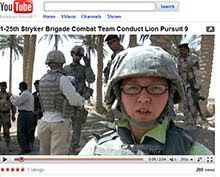This news business never gets easier.
When I first ventured overseas in 1979, traveling by way of an $1,800 settlement from a motorcycle accident and doors opened by a press card gifted by Trans World News, a basketball-sized Domke camera bag held all I needed: two sleek Olympus 35-mm bodies, a flash and my trim, light 28-, 50- and 135-mm lenses.
What I didn’t wear, I toted in a ridiculously simple aluminum-frame backpack, including a small portfolio and carefully hoarded store of hand-rolled Tri-X and slide film.
My old college friend and collaborator, Jeff Greenwald, had it even easier. A pen and notebook, items readily available on the road, empowered the writer’s pursuit of any story, anytime. Being as young as we were, his burden came from hankering to, perhaps, branch into sculpting. He often complained about the unused chisels and carving tools clanking in his kit.
The prospect journalism might someday require laptops, chargers, converters, thumb drives, backup drives, and programs to make the tools work, internet connections to distribute the results and ensure that same software keeps working — that technical frontier lurked blissfully out of view.
We’ve had time to get used to laptop screens expanding from a few blue-lettered sentences to world-opening portals. We’ve become accustomed to spinning hourglasses eating away our inspiration. We’re conditioned to keep an eye peeled for outlets in the airport. These things took over our lives incrementally; hunger for the possibilities opened trumping the tonnage and worry associated with all these astounding devices allowing us to report stories in compelling new ways.
UAF Journalism’s Iraq reporting gear cost roughly $11,000. We’re bringing a pair of so-large-they’re-hard-to-pack Macbook Pros suited to editing HD video; a pair of new Canon HG-21 camcorders chosen for their built-in 120GB hard drives; two older PCs; a trio of digital audio kits; two very cool Canon T1i SLRs—one being mine financed out of pocket--and, lastly, a Sat phone courtesy of the UA Risk Management Office.
We have to pay for the minutes. Ouch.
We’ve consulted other embeds and collected info from the brigade and soldiers we know regarding the likely working conditions at Forward Operating Base Warhorse and other places we might end up. Honestly, there’s no end to what we might belatedly discover we should have brought given today’s ever-widening appetite for news delivered in differing formats.
Those years ago in Egypt, my flash busted right off the bat. By then, Greenwald had continued on to India and Nepal, which became the setting for his signature book, Shopping for Buddhas.
Freelancing for the UPI Cairo bureau netted about $35 a week, enough to survive, but well short of what I needed for the flash I coveted at the local shop window. You make do. No one even noticed at UPI Cairo that the skinny American stringer shot everything, including portraits of Arab-Israeli peace talks and summit meetings between Sadat in Begin, in natural light. Mainly I hunted the right light, if need be shadowing the TV guys. They always brought wattage.
Redundancy and self-sufficiency is, theoretically, our mantra for this assignment.
Our savvy department tech, Jason Lazarus, pulled all nighters ensuring all hums as it should.
Our equipment list is good on paper. It rivals the complexity of an Iditarod Team’s food drop, which mushers and handlers will appreciate.
Yet, dread fills my soul.
Watching Jessica, Tom and Jennifer testing and packing gear for UAF Journalism’s invasion, I know there’s a cable missing in the pile. An ill-chosen power converter. Software poised to demand an update. Things will crap out, crash, or beep uselessly. Students are going to confront that and, if we’ve done our job back home, adapt and overcome it—as the soldiers we’re here to cover surely must every day.
“Stay tuned,” the professor said, again with the dated material.
--Brian Patrick O’Donoghue








